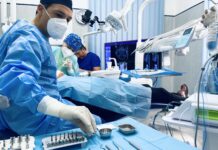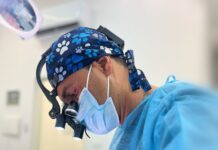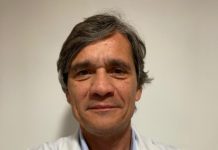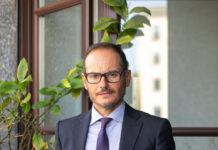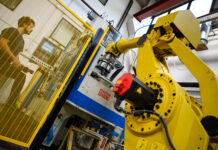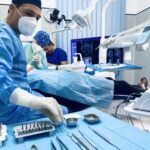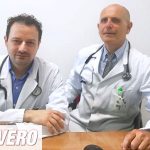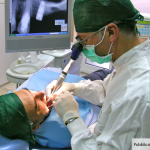Today, the NHS is called upon to face two new and competing challenges: controlling expenditure and improving health. If, on the one hand, it must comply with public finance constraints and cope with the increase in costs connected with technological innovation, which is of strategic importance in this sector, on the other hand, it must support the improvement in the quality of health, which necessarily passes through the provision of efficient preventive, rehabilitative and palliative health care services, which must be guaranteed to all citizens in the hospital, territorial and home environments, in a socio-demographic context characterised by the unstoppable increase in the phenomenon of ageing, fragility and non-self-sufficiency. Conditions destined to absorb the majority of economic resources. To gain an in-depth understanding of this highly topical subject, we interviewed Prof. Bruno Cavaliere, President of SIDMI, Prof. Giovanni Papa, President of AIUC (Italian Association of Cutaneous Ulcers), Prof. Marco Scatizzi, President of ACOI (Italian Association of Hospital Doctors),Giuseppe Tarantini, Director of haemodynamics and interventional cardiology at the University of Padua, and Dr Gennaro Broya de Lucia, president of PMI Sanità, the National Association of Small and Medium Enterprises committed to supplying hospitals with the equipment needed for diagnosis and treatment for Italians, which on this occasion acted as spokesman for the demands of scientific societies in Italy.
by Roberta Imbimbo

Prof. Cavaliere, today the NHS is called upon to take up new and exciting challenges, starting with an unavoidable reorganisation and innovation effort to improve the efficiency of care provision. But is it impossible to meet these challenges without adequate financial resources?
To ensure the evolution and sustainability of healthcare systems, and consequently to provide better care for citizens, innovation becomes an essential ingredient; It is no coincidence that one of the key levers for increasing the effectiveness and efficiency of care provision is precisely the ability to transfer innovation within the care and prevention systems, investing in the latest technology and R&D to improve the quality of care and assistance (increasingly patient-centred with the development of telemedicine, telemedicine, tele-assistance, and computerised files), make it easier to take charge of the patient in a timely manner, facilitate access to treatment and care, speed up diagnosis times, increase compliance with treatment, therapeutic adherence, and assistance and rehabilitation interventions.
Still talking about innovation, we cannot fail to mention Health Technology Assessment (HTA), a systematic, transparent, impartial and effective tool for measuring and assessing the validity and safety of health technologies. Can you tell us about it?
It can be considered as the bridge between science and planning, producing and synthesising information on clinical, economic, social and ethical issues necessary for decision-making processes related to the development of national and regional healthcare systems, the management of healthcare organisations and the choice of day-to-day clinical and care behaviour. Health Technology Assessment involves a multidisciplinary approach and is applicable to various contexts, including the evaluation of drugs, medical devices, diagnostic and therapeutic procedures, the delivery and monitoring of care interventions, but also in the field of health and socio-health planning and programming. Innovation can and must find wide application spaces in this area too, provided, however, that numerous critical issues are resolved, including the lack of adequate financial resources and healthcare personnel, especially nurses, which, if not stemmed and addressed, risk making care in the Italian healthcare system unsustainable.

Prof. Papa, what do you see as the new challenges for the national health system?
The most important challenge today is to keep it alive, since the national health system has not existed for several years now, even though no politician has the courage to admit it. As President of the AIUC, I believe that some courageous reforms are necessary, such as replacing the term ‘company’ in the National Health System, abolishing DRGs and returning the governance of the national health system into the hands of doctors and no longer health managers.
What would be the innovations and technological investments needed?
Certainly having all reliable performance data and devices available to the system, as well as the digitisation of health data such as the electronic health record and telemedicine (in Aisdet). The digitisation of data would be fundamental for the economic control of healthcare expenditure. Suffice it to say that companies in the sector have been asked for payback without the regions having any data on the actual consumption of devices, e.g. materials that expired in the current year. By involving the scientific societies in each specific sector and not collegially, medical experts in regional purchasing tenders and HTA of care pathways should be able to decide on the best devices for their patients because the effectiveness and efficiency of the system is the only way to save money in healthcare.
What can Italian companies be alongside professionals in?
Italian drug and medical device companies in every specialised scientific sector of their relevance are already alongside professionals by providing resources for the training that is required of doctors through compulsory CMEs but not financed in any way by the state. It is not clear why in Italy public money can go to accredited private facilities but there can be no private investment as there is in the United States in public facilities.

Dr Scatizzi what do you think is the biggest challenge for surgeons in the NHS?
There are obviously many challenges, but I think the most important one to date is the lack of vocations for our profession, which is central to the very survival of the NHS. Unfortunately, in the 22/23 academic year 28% of the General Surgery specialisation scholarships remained unallocated, and this year even 56%, so twice as many. This means that, unfortunately, within one to two years there will be a shortage of general surgeons to replace those retiring. We are not alone, other specialities are unattractive, but without 24-hour surgeons, a hospital cannot remain open, so the consequences are potentially devastating.
Why this phenomenon?
Again, there are several causes, which we as the Association of Italian Hospital Surgeons have analysed with questionnaires drawn up by our young ACOIs and submitted to a population of General Surgery residents and young people who are already working in our hospitals. The strongest motivations are the very high and often absolutely unfounded legal disputes, the often deficient training in specialisation schools and the employment in tasks that are incongruous with respect to the training course, the low remuneration compared to other European countries, and the onerous commitment, especially for women, in relation to duty hours beyond reasonable workloads.
They prefer less onerous specialisations to learn that are more remunerative and less risky of complaints and conflicts.
What can you as an association do to reverse this trend?
Well, we are doing many things, but much more needs to be done by the university and the state.
We, as hospital surgeons, welcome, when we are included in the training networks, young colleagues and involve them in daily life, teaching them this wonderful profession, training them progressively to take charge of increasingly difficult surgeries, trying to make our profession proud and respectful. The University must strive to ensure that the Schools meet European criteria and that young people are employed in functions that teach them surgery and not in other tasks that have nothing to do with their training, and the State must invest money to better remunerate these functions that are essential for citizens, by spreading salaries and rewarding merit and risk. We also have a Youth Group that through promotional initiatives that explain the essence of our profession and involve the youngest, convey the enthusiasm that this magnificent profession gives to those fortunate enough to experience it in the right way.
We also have for our members a Legal Department and a series of insurance policies included in the membership fee, to reduce the emotional burden created by litigation. We have also proposed a fully hospitalised, better paid and more effective training pathway that would equate the title to that of specialist after five years. I hope that our efforts can contribute to solving this serious problem.

Prof. Tarantini, what needs to be done to boost the competitiveness of the NHS?
In order to improve the competitiveness of the National Health Service (SSN), it is essential to consider the public resources allocated to healthcare as an investment rather than an expense. These resources have a positive effect on the economy, employment, research and innovation. In order to improve the efficiency of health services and adapt the NHS to ongoing changes, it is necessary to carefully manage the cost of new medical devices, avoiding waste, especially in a context of pressurised public budgets and the need to control spending growth. It is essential to establish an acceptable cost-effectiveness ratio, ensuring that costs are sustainable. This requires an assessment of the technical qualities of medical devices and their clinical effectiveness, i.e. their impact on the health and well-being of citizens. The main criterion must be the clinical benefit that an innovation brings to patient care. To make the NHS more effective, efficient and resilient, it is necessary to avoid waste by not investing in medical devices that do not bring significant health benefits or that are too expensive and can be replaced with equivalent but cheaper alternatives. It is also important to ensure equity of access to healthcare by supporting innovation that offers real improvements in patient care.

Dr. Broya de Lucia, what is the role of the SME Sanità Association in the context of the new laws affecting the Italian healthcare sector, and how is it helping to support companies in the sector in navigating these regulatory and operational challenges?
Public and private healthcare today adopts more stringent parameters in terms of quality, transparency and accessibility of healthcare services, forcing companies to restructure processes and revisit operational strategies. Our Association is actively committed to providing maximum support to all its more than 160 member companies through legal assistance, training, networking and institutional representation. By providing resources to ensure timely and up-to-date information on the latest regulatory developments and conducting specialised refresher courses, PMI Sanità aims to ensure full compliance with current laws for all small and medium-sized companies operating in the healthcare sector. Even in the light of recent ‘anomalies’ such as payback and turnover tax, institutional dialogue plays a central role in the Association’s economy. The experience of SMEs, like that of scientific societies, must be brought into the system in order to truly understand the needs and tools for improving the Italian health system.
Bearing in mind the vital role of Italian companies in the healthcare sector, what strategies do you think the Association can adopt to provide effective support to professionals?
In Italy, SMEs have always played a pioneering role in innovations in healthcare, just think of the first heart valve without surgery (TAVI), the first coronary stent for the treatment of heart attacks, the first ultrasound scanner miniaturised enough to ‘see’ inside the vessels of the heart (IVUS); all technologies that have made it possible to improve the quality of life and health outcomes for a large part of the population. Today, the SMEs continue in this mission, aiming to be a reference for the future HTA programme in a continuous dialogue with scientific societies including, in addition to those mentioned above, the Italian Hta SIHTA society. There will be a commitment on everyone’s part, but the crucial issue remains for the companies that await the cancellation of the unconstitutional payback and for doctors and nurses who must count on salaries adequate to the work they are asked to do. While creating more efficient processes, it will in fact be impossible even to envisage a healthcare system that grows in numbers and quality and that does not sadly force doctors to have to choose between quality of life and quantity of life!






